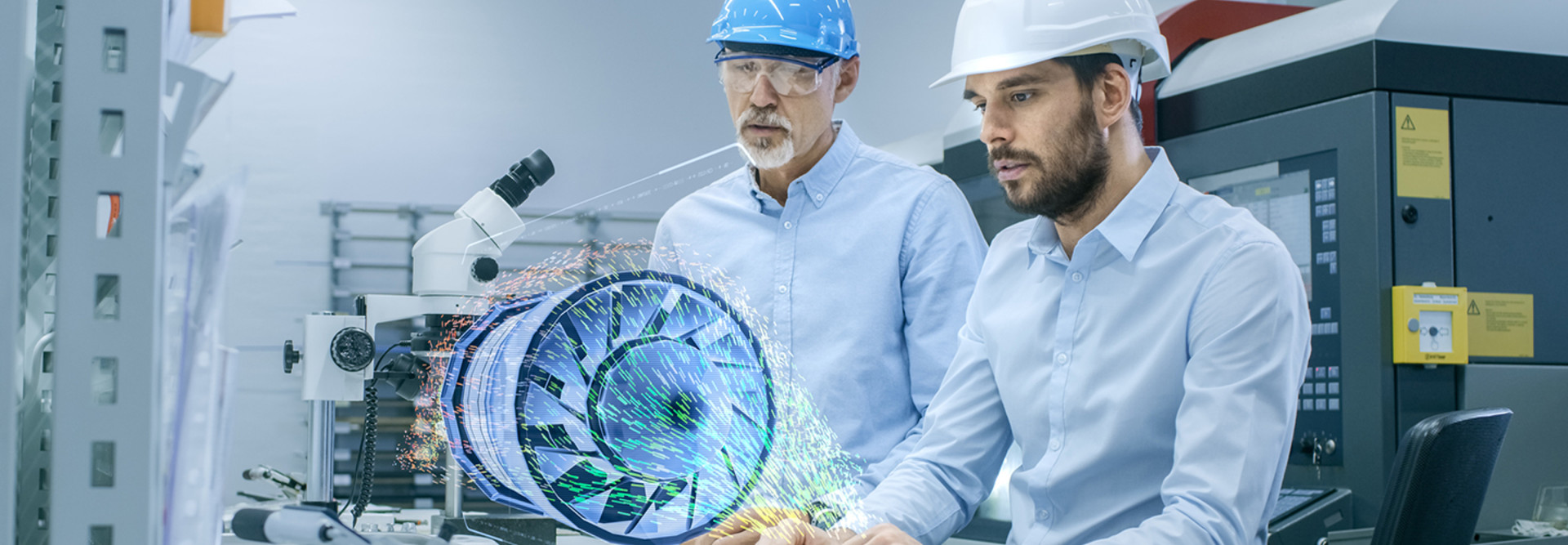Digital Twin Technology: What Is a Digital Twin, and How Can Agencies Use It?
Fighter jets cost the Air Force and other military branches tens of millions of dollars each. NASA space missions can run into the hundreds of millions of dollars. Those agencies need to ensure that they are using reliable machines and systems, especially if they are needed for war zones or critical missions to Mars.
Thanks to digital twin technology, they can. Digital twins combine numerous technologies to create full-scale digital versions of real-world objects and processes, which can help agencies determine their performance and when they might break down. That, in turn, improves reliability and saves costs.
“Using exact duplicates to manage complex systems dates back to NASA’s moon missions of the 1960s and 1970s,” SAS Analytics notes in a post on its website. “NASA used mirrored systems, the precursor of digital twins, to rescue the Apollo 13 mission when it ran into trouble. Nearly 50 years later, digital twin technology helps NASA understand and manage the operation of machines that are moving through the vast reaches of our solar system.”
MORE FROM FEDTECH: Find out how federal IT leaders can adapt to accelerating technological change.
What Is a Digital Twin?
Mark Vitale, a specialist leader with Deloitte Consulting’s federal practice who specializes in advanced manufacturing and supply chains, says digital twins are a virtual representation of a physical product or manufacturing process and the performance of that part, asset or process in the real world.
Put a simply, a digital twin is a digital or virtual model of a real-world object that replicates its performance, allowing the creator of the digital twin to determine where the asset — a jet engine, a turbine, a vehicle, etc. — performs well and where it performs poorly.
Digital twins allow agencies to understand what the product or process is designed to do, how to build it from an initial production standpoint, and how to maintain it over its lifecycle, says Vitale.
Digital twins use “real-time data and other sources to enable learning, reasoning, and dynamically recalibrating for improved decision making,” as Matthew Mikell , a product marketing leader for Watson IoT at IBM, and Jen Clark, an IBM Internet of Things blog writer, note in a blog post.
At bottom, Mikell and Clark note, digital twins are complex virtual models that are “the exact counterpart (or twin) of a physical thing. The ‘thing’ could be a car, a tunnel, a bridge, or even a jet engine. Connected sensors on the physical asset collect data that can be mapped onto the virtual model. Anyone looking at the digital twin can now see crucial information about how the physical thing is doing out there in the real world.”
VIDEO: Discover the best practices for Internet of Things deployments.
How Government Agencies Can Create a Digital Twin
Typically, digital twins start out as a 3D computer-aided design model, Vitale says. That design may be modified over time as the product is produced. “You’re taking a digital representation of the production process and the product as it moves through the production process, so you’ve got an as-designed model, an as-built model and then, ultimately, an as-maintained model,” he says. The digital twin can record those modifications over time so that government agencies can maintain consistency over an asset’s lifeycle, he adds.
A number of technologies make that possible, Vitale notes. They include sensors that are placed on the asset, which then feed data to an Internet of Things platform and the underlying network technology needed to support the IoT platform.
A key component of the digital twin architecture is the “digital thread,” which Deloitte defines as a “single, seamless strand of data that stretches from product requirement to product retirement,” Vitale says.
The digital thread is where the digital twin lives, Vitale says, and the backbone for that is usually product lifecycle management software. Federal agencies can also use manufacturing execution software. The digital thread can also include the IoT platform, CAD tools and predictive analytics tools, according to Vitale.
Predictive analytics tools would require some amount of machine learning to build the virtual understanding of the physical product. That data is collected through multiphysics modeling tools, which create mathematical representations of systems and parts.
The Benefits of Digital Twins
There are numerous benefits to digital twin technology. Digital twins enable predictive analytics and predictive maintenance of assets, Vitale says, potentially allowing agencies to predict failures before they occur. That’s especially valuable for weapons systems, probes or other technologies that are past their expected retirement date.
Digital twins reduce product defects, either by enabling agencies to design a more reliable product or asset from the start, according to Vitale, or by determining how an asset performs over the course of its lifecycle and making improvements.
Digital twin tools can also help agencies cut initial production costs by designing a more efficient manufacturing process. The tools can also help cut future maintenance costs by making products more reliable, Vitale notes.
In a technical white paper on digital twin technology, two government scientists note that digital twins integrate sensor data along with maintenance history and fleet data obtained via data mining and text mining.
The paper is written by Edward Glaessgen, assistant branch chief of the durability, damage tolerance and reliability branch at the NASA Langley Research Center; and David Stargel, deputy chief scientist at 711th Human Performance Wing, Air Force Research Laboratory.
By combining all of this information, they write, the digital twin “continuously forecasts the health of the vehicle or system, the remaining useful life and the probability of mission success.”
Digital twins can also predict how a system will respond “to safety critical events and uncover previously unknown issues before they become critical by comparing predicted and actual responses.”
MORE FROM FEDTECH: Find out the keys to achieving digital transformation in government.
Digital Twin Examples
The value of digital twin technology is available to any organization that has a highly complex and highly engineered piece of equipment, Vitale says. That includes NASA and the Defense Department, he notes.
The Air Force has embraced the digital thread concept to improve its acquisition process and performance of weapons systems.
“Though Digital Thread appears to be a complex, abstract concept at the surface, the benefits to the Air Force at all stages — from initial product design to manufacturing, operation and sustainment of aircraft and weapons systems by the warfighter — are enormous,” an Air Force release notes. “Streamlined resolutions of weapon system performance issues, identification of system maintenance needs and management of risk are just a few benefits to the field,” according to Brench Boden, technical lead in the Air Force manufacturing technology division, materials and manufacturing directorate of the Air Force Research Laboratory.
NASA uses digital twin technology to develop new recommendations, roadmaps and next-generation vehicles and aircraft, according to Forbes.
“The ultimate vision for the digital twin is to create, test and build our equipment in a virtual environment,” John Vickers, NASA’s leading manufacturing expert and manager of NASA’s National Center for Advanced Manufacturing, tells Forbes.
“Only when we get it to where it performs to our requirements do we physically manufacture it,” he adds. “We then want that physical build to tie back to its digital twin through sensors so that the digital twin contains all the information that we could have by inspecting the physical build.”










